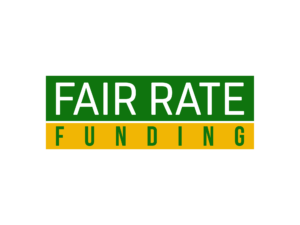Justice is the Purpose of Settlement Loans
In this post, we try to pinpoint the purpose of settlement loans.
Imagine trying to win a race to see who can chop down a tree the fastest. On one side, you stand with an axe. You have your muscles, a body full of energy and your determination. As you prepare for the race, you glare down at your opponent to psych him out. To your surprise – he is holding a chain saw. All the speed, power, and skill in the world will not prevent the inevitable, will it?
The Personal Injury Game
Unfortunately, many plaintiffs are in this very predicament with their personal injury lawsuits.
Involvement in a lawsuit is often an eye-opening experience for plaintiffs. During this time, plaintiffs are exposed to the judicial process. They get an education on how participants play the game. Many plaintiffs do not initially realize it’s a game. When they do, they understand that the deck is stacked against them. Deep pocketed insurers are their adversaries, and even the best attorneys often cannot level the playing field by themselves. Maximum recovery is the goal. To reach it, all possible tools should be used, if needed. Lawsuit funding is one tool available to plaintiffs.
Settlement loans are advances of cash to plaintiffs who need immediate financial relief, prior to settlement. Also known as lawsuit loans or lawsuit funding, settlement loans exist to help litigants in their time of need. This is the purpose of settlement loans.
The Chain Saw – the Need for Lawsuit Loans

Like the above mentioned tree chopping race, plaintiffs are simply holding an axe. The axe represents the favorable facts of the case – essentially the reason for the lawsuit. The opponent (defendant) is usually a large insurance company – they are the ones who will ultimately have to pay but they are also the ones holding the chain saw.
Taking this a step further, the chain saw is representative of the various “tools” the insurer has at its disposal. These include current laws, the judicial process, and the availability of lawyers and support staff who use these laws and manipulate the process to defend the case. The insurer has money to pay for all of these things (lawyers, paralegals, stenographers, experts, etc.) and pay for the settlement if and when that time comes. But the insurer knows money makes more money and if it can delay the payment of a claim – for whatever reason – it would have more money from which to draw a return. Ultimately the insurer is bound by contract law to pay the claim, otherwise the company will be exposed to an action for bad faith. But until that time comes – delaying a viable claim is simply another tool for the insurance company.
The Axe – the Real Purpose of Settlement Loans
The plaintiff on the other hand is on the opposite end of the spectrum. He has very little money compared to insurance companies and in the case of personal injury lawsuits, is often unable to work at all. The only tool at their disposal is the ability to access the legal system through his/her attorney. The way this is done in a personal injury case is through a contingency fee arrangement (usually 33% – 40% of the recovery). Allowing attorneys to have a stake in the case’s outcome opens up the civil judicial system to many people who would otherwise not be able to pay for a lawsuit. That’s the good news.
The bad news is that the deck is still stacked against plaintiffs. Lawyers and other legal service providers (the best lawsuit loan companies included) all make money from the lawsuit – at the plaintiff’s expense. Allowing negligence victims to become whole again is the intent of the proceedings. But this is impossible once you factor in lawyers’ fees, expenses, time, stress and any number of other “costs”. The only way to truly defray these costs is to obtain more money.
There is no substitute for an attorney’s skill, experience and expertise in obtaining a “favorable” result on a lawsuit. But frequently, financial burdens lessen plaintiffs’ ability to endure the time it takes to resolve the case. As a result, plaintiffs are forced to accept low-ball settlement offers just to pay some bills.

In response to this unfortunate reality, the lawsuit funding industry began. But the purpose of settlement loans, sometimes called legal funding, is to level the playing field by helping plaintiffs stay current on their expenses while the case is still pending. By offering cash now for lawsuits prior to settlement, plaintiffs are able to withstand the stress associated with the process and can refuse low ball offers. This frequently results in a larger recovery.
Fulfilling the Purpose of Settlement Loans
While lawsuit funding will not win the case, cash advances on lawsuits help out when plaintiffs need it the most. Properly utilized, case settlement loans allow plaintiffs to sit tight until the chain saw runs out of gas. Their attorneys can then work up the case properly and get the maximum amount available in recovery.
Thanks for your interest in learning about the purpose of the lawsuit settlement loan business.

